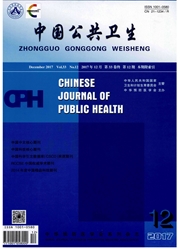

 中文摘要:
中文摘要:
目的 观察重金属元素在人类白骨化尸体股骨中含量变化,探讨重金属含量在推断晚期死亡时间中作用。方法 采用石墨炉原子吸收分光光度法测定白骨化尸体股骨样本中铅、镉含量,原子荧光光谱法测定各样本中汞含量,用R软件对模型和参数进行评估,并将测得数据进行相关分析。结果 随死亡时间延长,白骨化尸体股骨中镉、汞2种元素含量逐渐减少,铅含量无规律性变化;对不同死亡时间间隔白骨化尸体股骨样本中铅、镉、汞含量值进行检验及回归分析,构建线性模型和混合效应模型结果显示,线性模型的普遍适用性较差,混合效应模型预测15个样本死亡时间基本准确,但随机部分会造成很大误差。结论 机体骨骼中汞、镉2种重金属元素含量变化有助于推断白骨化尸体晚期死亡时间。
 英文摘要:
英文摘要:
Objective To explore the alteration of heavy metal contents in femurs of skeletonized human remains (SHR) and its relation to postmortem interval (PMI) estimation. Methods Contents of lead and cadmium in femurs of SHR were measured with graphite furnace atomic absorption spectrometry and the content of mercury was determined with atomic fluorescence spectrometry. The data were statistically analyzed with R software. Results With the extension of time after death, cadmium and mercury contents in the femurs of SHR gradually reduced but the lead changed irregu- larly. The results of regression analysis for the relationship between the metal contents and PMI showed that the mixed model could estimate the death time of 15 SHR much more correctly than the linear mode,but the random part of the mixed model could lead to a substantial error. Conclusion Alteration of mercury and cadmium content in bones of KHR could be used to estimate PMI.
 同期刊论文项目
同期刊论文项目
 同项目期刊论文
同项目期刊论文
 期刊信息
期刊信息
